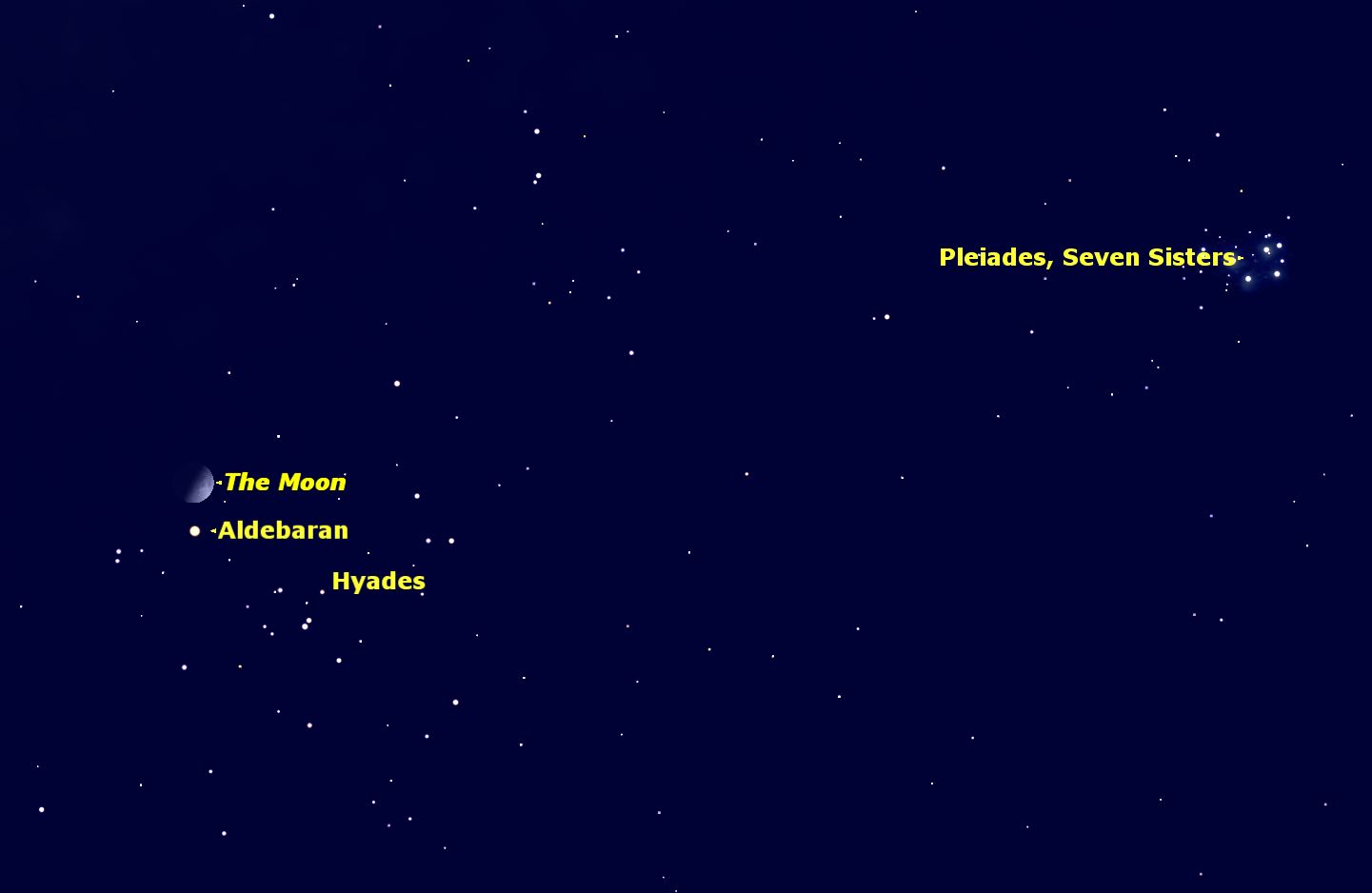How to See 2 Star Clusters Shining in the Night Sky

As the moon moves around its monthly orbit of the Earth, it passes near or in front of a wide variety of objects. At some points in its orbit, there are almost no stars behind it. In others, Earth's natural satellites is embedded in a field of glimmering stars.
At the end of February, the moon passed directly in front of an open star cluster called the Hyades. Star clusters come in two varieties. Open star clusters are relatively young groupings of up to a few hundred stars, while globular star clusters are much larger, older clusters containing hundreds of thousands of very old stars.
The Hyades star cluster was discovered and named by the ancient Greeks, along with the nearby Pleiades star cluster. In fact these are two of the three star clusters closest to the sun. The Hyades are 150 light years away, while the Pleiades are 410 light-years from Earth. You can see the Hyades and the Pleiades in the sky by looking up and to the right from the constellation Orion's belt. [Night Sky Events of March 2015 (Sky Maps)]
Although close in the sky and close to us in distance, the Hyades and Pleiades look quite different. Because the Hyades is much closer to Earth than the Pleiades, its stars are spread out over a much wider area of sky, close to 7 degrees in diameter. (Your fist held to the sky covers about 10 degrees.) The Pleiades are more concentrated, only 2 degrees in diameter. For comparison, the moon is half a degree in diameter.
Another difference is that the stars of the Pleiades are younger and inherently brighter than the stars of the Hyades, making the cluster as a whole more obvious to the unaided eye. The brightest star in the Hyades, Aldebaran, is actually not a member of the cluster, but is in fact much closer to Earth at 67 light years away, than the cluster itself.
You may have seen images of the Pleiades made with long exposures, which reveal another difference between these two clusters. The Pleiades are embedded in a faint nebulosity. This is not the nebula in which the cluster formed, but is just a nebula that the cluster happens to be passing through.
Although easily photographed, the nebulosity in the Pleiades is hard to observe. It is best seen in a dark moonless sky with binoculars. If you think you see it, swing your binoculars over to the Hyades. There is no nebulosity associated with the Hyades, so there should be a distinct difference in the appearance of the two clusters if you are in fact seeing the Pleiades nebula.
Get the Space.com Newsletter
Breaking space news, the latest updates on rocket launches, skywatching events and more!
Editor's note: If you have an amazing skywatching photo of the star clusters or any other night sky view you'd like to share for a possible story or image gallery, please contact managing editor Tariq Malik at spacephotos@space.com.
This article was provided to Space.com bySimulation Curriculum, the leader in space science curriculum solutions and the makers of Starry Night and SkySafari. Follow Starry Night on Twitter @StarryNightEdu. Follow us @Spacedotcom, Facebook and Google+. Original article on Space.com.
Join our Space Forums to keep talking space on the latest missions, night sky and more! And if you have a news tip, correction or comment, let us know at: community@space.com.

Geoff Gaherty was Space.com's Night Sky columnist and in partnership with Starry Night software and a dedicated amateur astronomer who sought to share the wonders of the night sky with the world. Based in Canada, Geoff studied mathematics and physics at McGill University and earned a Ph.D. in anthropology from the University of Toronto, all while pursuing a passion for the night sky and serving as an astronomy communicator. He credited a partial solar eclipse observed in 1946 (at age 5) and his 1957 sighting of the Comet Arend-Roland as a teenager for sparking his interest in amateur astronomy. In 2008, Geoff won the Chant Medal from the Royal Astronomical Society of Canada, an award given to a Canadian amateur astronomer in recognition of their lifetime achievements. Sadly, Geoff passed away July 7, 2016 due to complications from a kidney transplant, but his legacy continues at Starry Night.










